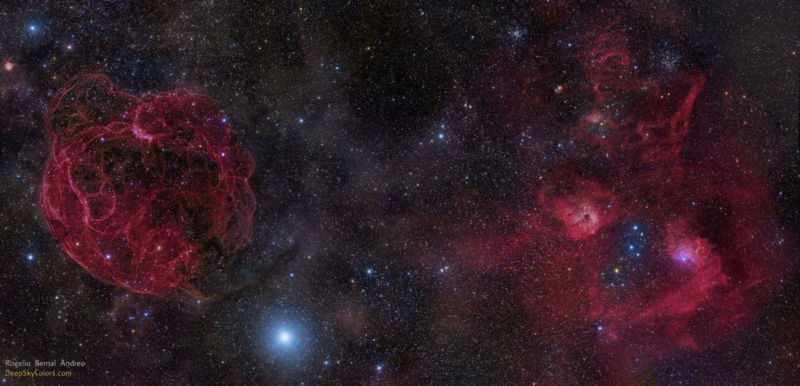Whatever causes fast radio bursts is sitting in an intense magnetic field
Ars Technica 2018-01-15

Enlarge / The fast radio burst in question, FRB 121102, is located in the top-right portion of the image. On the left is a large supernova remnant. (credit: Rogelio Bernal Andreo (DeepSkyColors.com))
The Arecibo Observatory may be suffering along with the rest of Puerto Rico, but some of its data made a big appearance in last week's edition of Nature. The data comes from the only object of its type we've identified yet: a repeating source of fast radio bursts. And, while the new observations don't definitively tell us what's creating the bursts, they do suggest that whatever it is, it's buried in an extremely energetic cloud of material that's generating some of the most intense magnetic fields we've yet found in the Universe. So intense, in fact, that if the source of the magnetic field is a black hole, then it is as massive as 10,000 Suns.
What is that?
A bit over a decade ago, we didn't even know that fast radio bursts existed. Then a radiotelescope accidentally captured a sudden spike of immense energy that vanished within an instant. That might be dismissed as a hardware glitch, except the observatory eventually caught a few more; over time, dedicated searches revealed that fast radio bursts are a regular, if rare, phenomenon.
The amount of energy produced in a fast radio burst typically comes from a cataclysmic event, one that destroys its source. And indeed, there was no indication of a second burst from any of these sources—but no sign of anything interesting at their location in any other wavelength. The source of fast radio bursts remained a mystery.